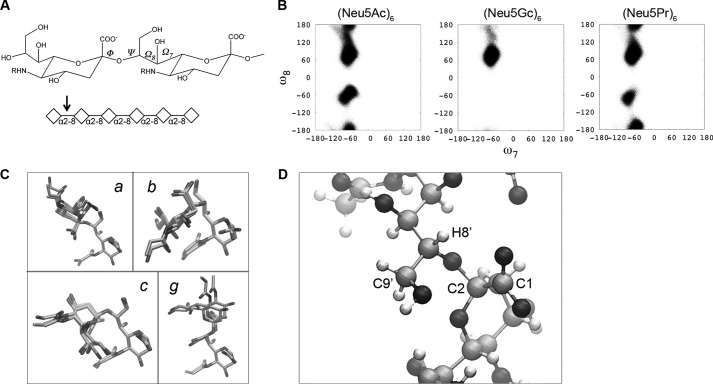FIGURE 7.
Molecular dynamics modeling demonstrates conformational similarities and differences between hexamers of Neu5Ac, Neu5Gc, and Neu5Pr. Hexamers were modeled and analyzed for conformational differences. A, location of ψ, ϕ, ω7, and ω8 bond torsion angles across a glycosidic linkage. The arrow indicates the position of the terminal glycosidic linkage of the hexamer whose data is shown in Table 2. B, plots for the nonreducing terminal glycosidic linkage torsion angles (°) for ω7 and ω8, demonstrating the absence of one state (b, Table 2) in Neu5Gc hexamers. C, three-dimensional structures of the two terminal disaccharides in the most populated rotamers (state a, Table 2) and those with significant differences between Neu5Ac, Neu5Pr, and Neu5Gc (states b, c, and g, Table 2). Each of the sialic acid models is shown overlaid. D, molecular model indicating a conformation close to the likely transition state for lactonization. The molecular modeling predicts this conformation (and therefore the transition state of lactonization) is not easily accessible by the poly-Neu5Gc molecules.

